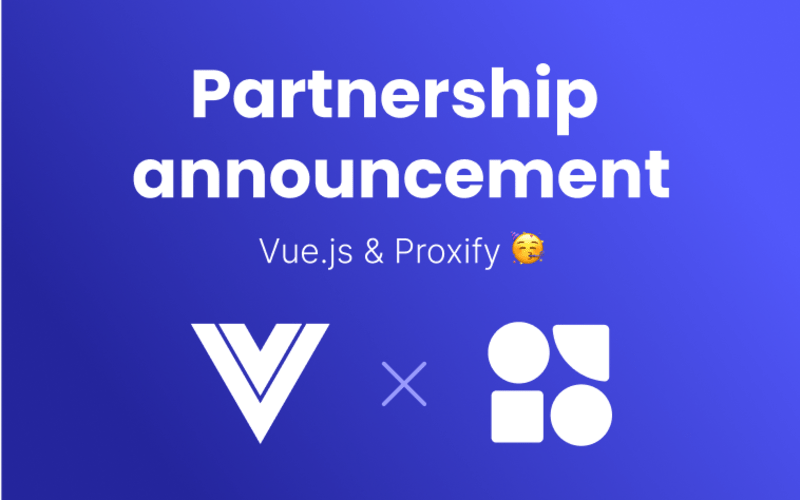Are you curious about the role of a Fullstack Developer or Engineer?
Delving into the realm of technology, a Fullstack Engineer is a versatile professional proficient in both frontend and backend development. From crafting user-friendly interfaces to managing databases and server-side logic, a Fullstack Engineer encompasses a broad skill set that enables them to tackle various tasks within web development.
In this comprehensive guide, we will unravel the mystery behind the role of a fullstack engineer, exploring their responsibilities, required skills, and the evolving landscape of this dynamic field.
Defining 'Fullstack'
The term 'fullstack development' refers to a collection of technologies needed to complete a project, encompassing both the frontend and the back end. A 'stack' is a group of sub-modules or components stacked together to achieve a specific function. In the context of web development, this includes everything from the user interface to the server-side applications and database management.
A Fullstack Engineer is skilled in the entire breadth of fullstack development, meaning they can develop both client and server software. This includes creating interactive user interfaces, writing business logic, working with databases, and maintaining the architecture connecting them.
What does an Engineer do?
A Fullstack Engineer is responsible for the complete development cycle of a web application or product. They translate user requirements into a functional and appealing digital environment, ensuring a seamless user experience. They work on the front and backend web development side, creating the visual components that users interact with and on the backend, which involves server-side logic and database management.
Their day-to-day tasks may include designing user interfaces, writing and testing code, troubleshooting and debugging applications, and integrating various software components. They must also be adept at working with APIs to connect different web services and have a solid understanding of network and security fundamentals. By being skilled in both frontend and back-end languages and frameworks, a Fullstack Engineer can oversee projects from a comprehensive perspective, making critical decisions that affect both the performance and scalability of the application.
The Fullstack Engineer: An in-depth look
Skills and expertise of a Full Stack Engineer
A Fullstack Engineer must possess a diverse set of technical skills across different layers of development. They should have a strong grasp of frontend technologies like HTML, CSS, JavaScript, and frameworks like React or Angular. They should also be proficient in back-end languages and frameworks, including but not limited to Node.js, Python, Ruby on Rails, or Java.
In addition, knowledge of database management systems, such as SQL (like PostgreSQL or MySQL) and NoSQL (such as MongoDB), is crucial. They should also be familiar with version control systems like Git.
Understanding design principles and user experience (UX) is also part of their skill set, enabling Fullstack Engineers to work together to create intuitive and efficient applications. Effective communication and problem-solving skills are vital, as Fullstack Engineers often collaborate with other team members and stakeholders to bring a project to fruition. They should also be adept at learning new technologies and adapting to the evolving landscape of web development.
Roles and responsibilities in a project
Within any given project, a Fullstack Engineer juggles multiple roles and responsibilities. Their role career in fullstack also involves designing and implementing user interactions on websites, developing servers and databases for website functionality, and coding for mobile platforms.
They are also responsible for creating servers and databases, ensuring cross-platform optimization for mobile phones, and ensuring that applications meet quality standards. Fullstack Software Engineers must stay updated with web application and programming language developments, continuously refining their skill set.
Moreover, they collaborate with graphic designers on web design features, making decisions on the layout and ensuring a responsive design. Their roles may extend to maintaining, expanding, and scaling the site to meet technical and consumer needs. Essentially, they are the linchpins in the project, connecting each piece to ensure a smooth, functional, and cohesive end product.
To enhance their workflow, Fullsack Developers and Engineers use various development tools that boost efficiency and productivity. Version control systems like Git are essential for tracking changes, collaborating with others, and managing code across different stages of the development cycle. Integrated development environments (IDEs), such as Visual Studio Code, JetBrains IntelliJ IDEA, or Eclipse, provide powerful coding tools, debugging capabilities, and code management features.
For collaboration and project management, tools like JIRA, Trello, or Asana help track progress and organize tasks. Containerization with Docker and orchestration with Kubernetes have become standard for consistently managing and deploying applications in different environments.
To ensure quality and performance, engineers employ testing frameworks like Mocha, Jest, or Selenium and use continuous integration/continuous deployment (CI/CD) pipelines to automate the testing and deployment processes. These tools, among others, are crucial in a Fullstack Engineer's arsenal, allowing them to work smarter, not harder, and deliver high-quality software efficiently.
Becoming a Fullstack Engineer: A pathway
Educational requirements and self-learning
A formal education in computer science or a related field is often beneficial for becoming a Fullstack Engineer. This provides a strong foundation in programming, algorithms, and data structures. Many engineers hold a bachelor's degree, but it's not uncommon for individuals with degrees in other disciplines to enter the software engineering field, provided they have the necessary technical skills.
Self-learning is equally crucial in this profession. The technology landscape constantly evolves, and staying current requires a commitment to ongoing education. Many Fullstack Engineers teach themselves new programming languages and tools through online courses, bootcamps, or self-directed study. Websites like Coursera, Udemy, and freeCodeCamp offer resources to help individuals gain the needed skills.
Networking with other developers, contributing to open-source projects, and building a portfolio of work are also key steps in the career path to demonstrating expertise and gaining practical experience. This blend of formal education and self-initiated learning is typical for many full stack engineers in the industry.
Gaining experience and building a portfolio
Building a robust portfolio is critical in establishing oneself as a Fullstack Software Engineer. Gaining practical experience through personal projects, freelance work, or internships can showcase your skills to potential employers. Start by creating web applications that solve real-world problems or that demonstrate innovative use of technology. Make sure to document these projects, highlighting the front and backend aspects and any unique challenges you overcame.
Contributing to open-source projects is another valuable way to gain experience. It allows you to work on large codebases, collaborate with other developers, and understand the nuances of project maintenance, end development skills, and contribution processes.
A well-documented GitHub profile can serve as a live portfolio, providing tangible evidence of your coding skills and ability to write clean, maintainable code. Remember, your portfolio reflects your capabilities as a full-stack developer and engineer, so make it diverse, detailed, and representative of your best work.
Fullstack Engineering: Pros and cons
Advantages of being a Fullstack Engineer
One of the primary advantages of being a Fullstack Engineer is the breadth of knowledge and skills they bring to a project.
Due to their wide-ranging expertise, Fullstack Engineers often enjoy more career growth opportunities. They can lead projects, guide decisions on technology stacks, and significantly impact product development strategy. Their skill set is highly sought after in startups and tech companies looking for professionals who can handle multiple aspects of a project.
Moreover, the ability of Fullstack Developers to work on diverse areas of an application fosters a deeper understanding of how different layers of technology interact, which can lead to innovative solutions and a more cohesive end product. It also offers more variety in day-to-day tasks, which can be intellectually stimulating and keep the work engaging.
Challenges encountered by Full Stack Engineers
Despite the advantages, Fullstack Engineers face several challenges. The need to stay current with various technologies can be daunting as new languages, frameworks, and tools are constantly emerging. This requires a commitment to continuous learning, often on one's own time.
Additionally, the expectation to have expertise in both the front end development frontend and backend can lead to a high-pressure environment. Being responsible for a project's entire lifecycle means that Fullstack Engineers are often the first point of contact when issues arise, which can be stressful.
There's also the risk of becoming a "Jack of all trades, master of none." Engineers must balance the depth of knowledge in specific areas with the breadth required to handle multiple aspects of the development process. Furthermore, they must navigate the complexities of integrating numerous systems and technologies to create a seamless application, which can be as challenging as rewarding.



